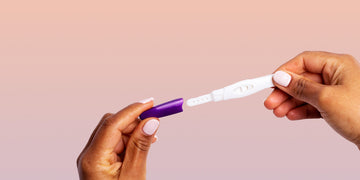What's the deal with pulling out?

Growing up, I was warned about the pull out method. From Cosmopolitan magazines to my friend’s older sisters, I learned about how you could have condom-free sex with men by them removing their penis at the opportune moment and completing their ejaculation away from my vagina.
Besides being messy, I was warned that it’s an ineffective way to protect yourself against pregnancy and sexually transmitted infections (STIs). I heard anecdotes about men who claimed they could pull out but sorely overestimated their orgasm control and left behind a trail of unwanted pregnancies. I also heard tales of STI tests returning positive results despite the puller-outer claiming to know their STI status.
And while these tales could have been true, some of these warnings may have been a bit misleading. Read further to hear what’s fact and what’s fiction about pulling out.
Does the pull out method prevent pregnancy?
Short answer: It can, but it is not the most effective method of birth control available. The pull out method, also called withdrawal, can be effective in preventing pregnancy if done perfectly each time (which isn’t all that likely). To perform withdrawal correctly, any ejaculation has to be kept away from the vulva and vagina every time you engage in sexual intercourse. This means the person with a penis needs to pull out before any ejaculation happens, and they have to aim the ejaculation away from the vaginal and genital area. Even a little bit of semen in the vagina can lead to pregnancy.
How effective is pulling out?
The rate of effectiveness for pulling out depends on whether it is done right every time. For every 100 people who use the pull out method perfectly, 4 people will become pregnant. But since perfection is hard to achieve with the pullout method, the number of people who become pregnant using withdrawal increases to 22 out of 100 people.
Overall, pulling out isn’t as effective as other types of birth control, such as condoms or IUDs, but it can be better than nothing. Using the withdrawal method paired with another form of birth control can be a more effective way to avoid pregnancy. If you want to use withdrawal as your main form of birth control, there are tools you can use to lessen your chances of getting pregnant. Fertility awareness methods, also known as FAMs, are methods of tracking your ovulation and planning sex to avoid that time in your cycle in order to prevent pregnancy. One of these methods is tracking your ovulation by using a calendar or Winx Health (formerly known as Stix) Ovulation Tests. Once you know your fertile window, you can use additional protection methods, such as condoms, during this time to help prevent pregnancy.
Remember to discuss all your options with your health care provider to assure you are comfortable with the risks and benefits of each fertility awareness method.
Does pulling out work to prevent STIs?
Short answer: No. Many STIs can be spread through skin-to-skin contact, other forms of sexual contact, mother to baby, and others can be carried in pre-ejaculation. Pre-ejaculation is commonly known as pre-cum and refers to the liquid that is released from the man’s urethra due to sexual excitement (but before a complete ejaculation happens). To effectively protect against the spread of STIs, we recommend using condoms, especially with new or multiple partners.
Shop the article
So, are we in or out on pulling out?
While pulling out can be effective against pregnancy if done right every time, it doesn’t help protect against sexually transmitted infections.
As always, we recommend getting in tune with your body, talking to your primary care provider about different forms of contraception, and having honest conversations with your partner about what’s comfortable for you.
Keep Reading

The definitive guide to ovulation testing
Oct 12

Should I tell my doctor I’m switching birth control?
Dec 27

How effective are condoms?
Jan 19











